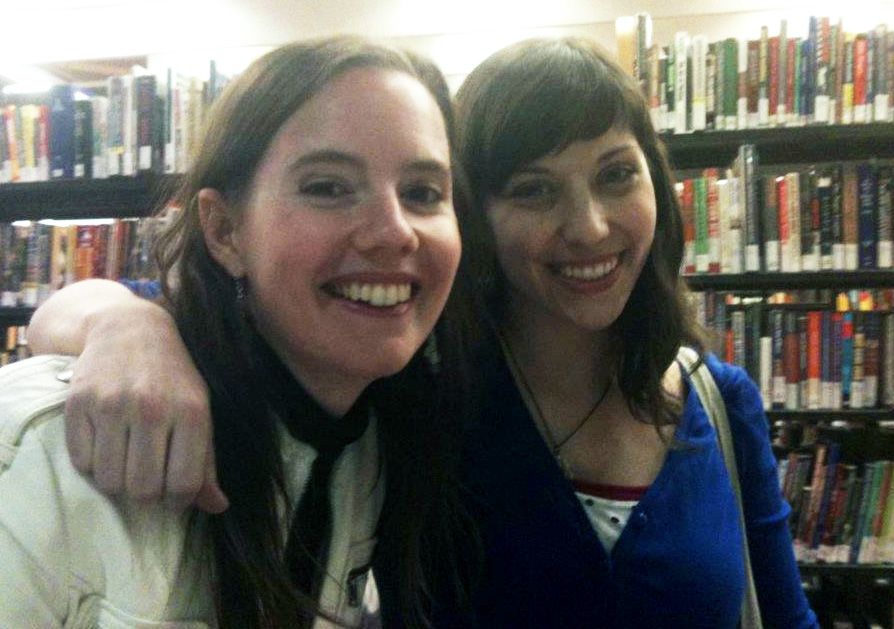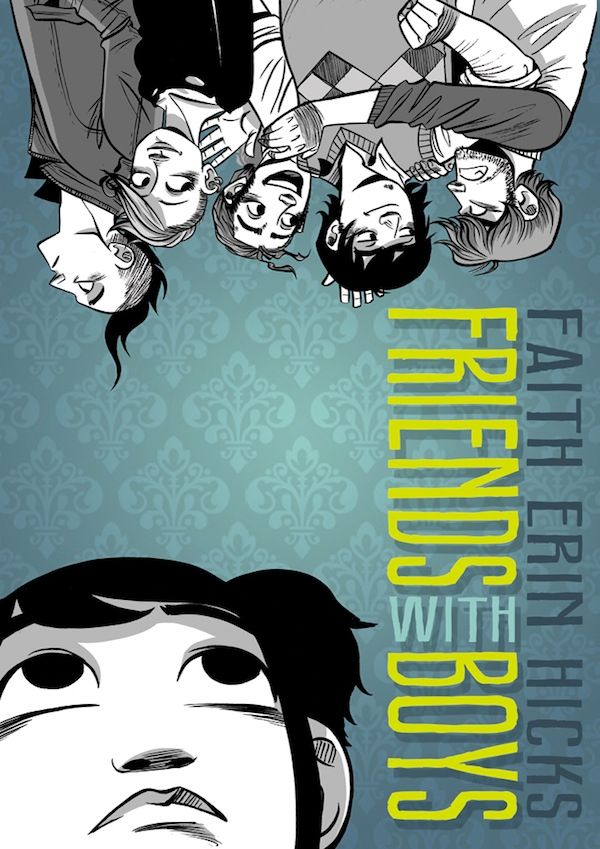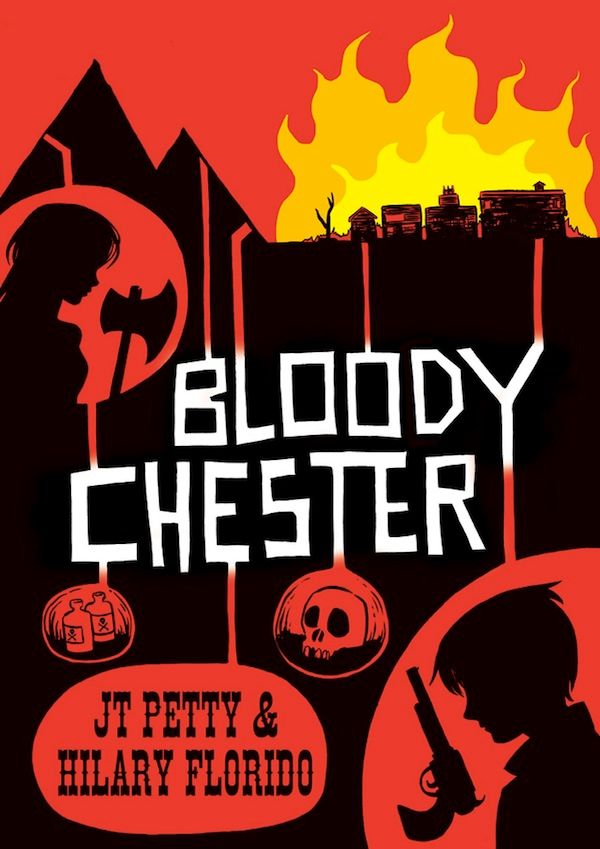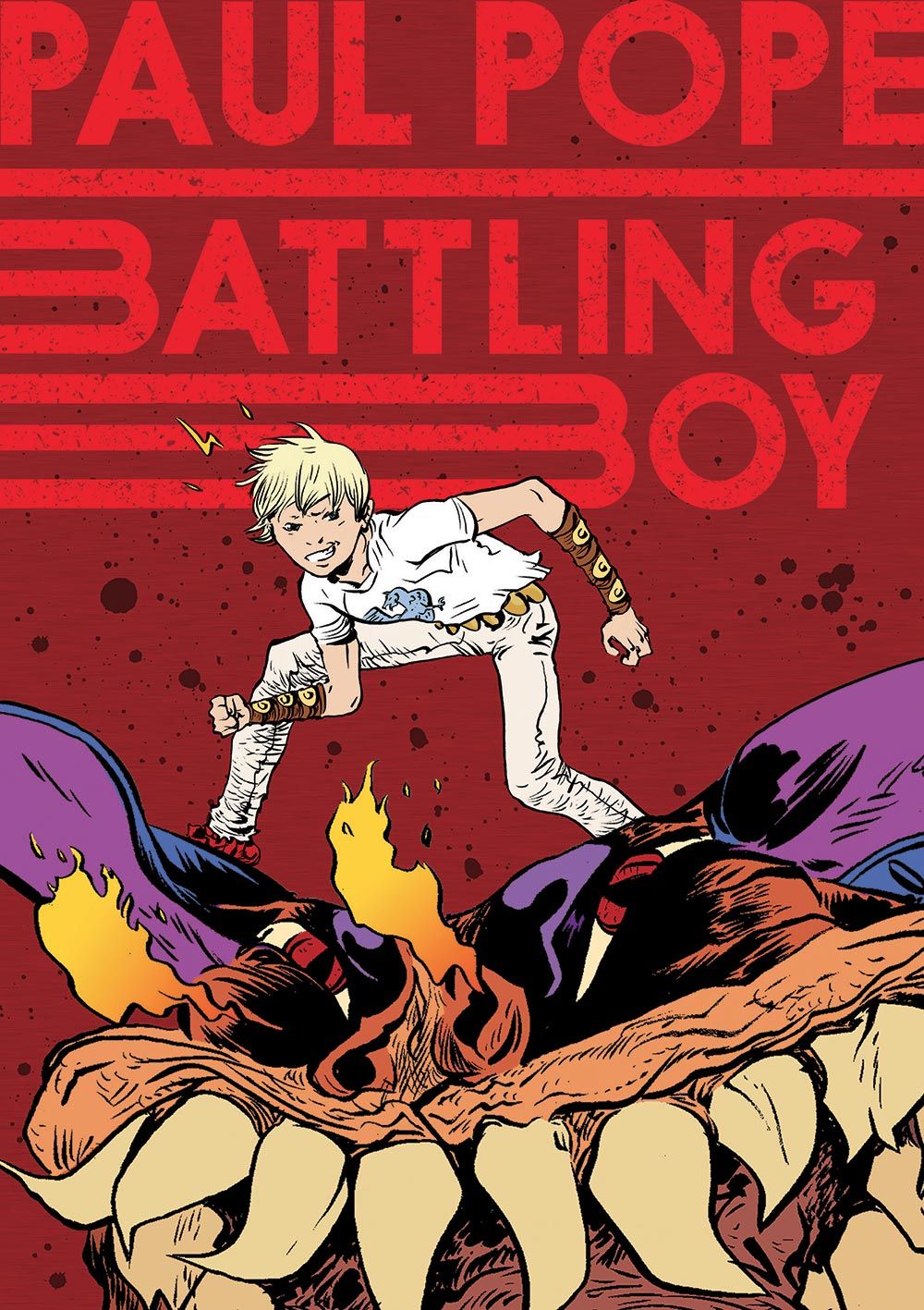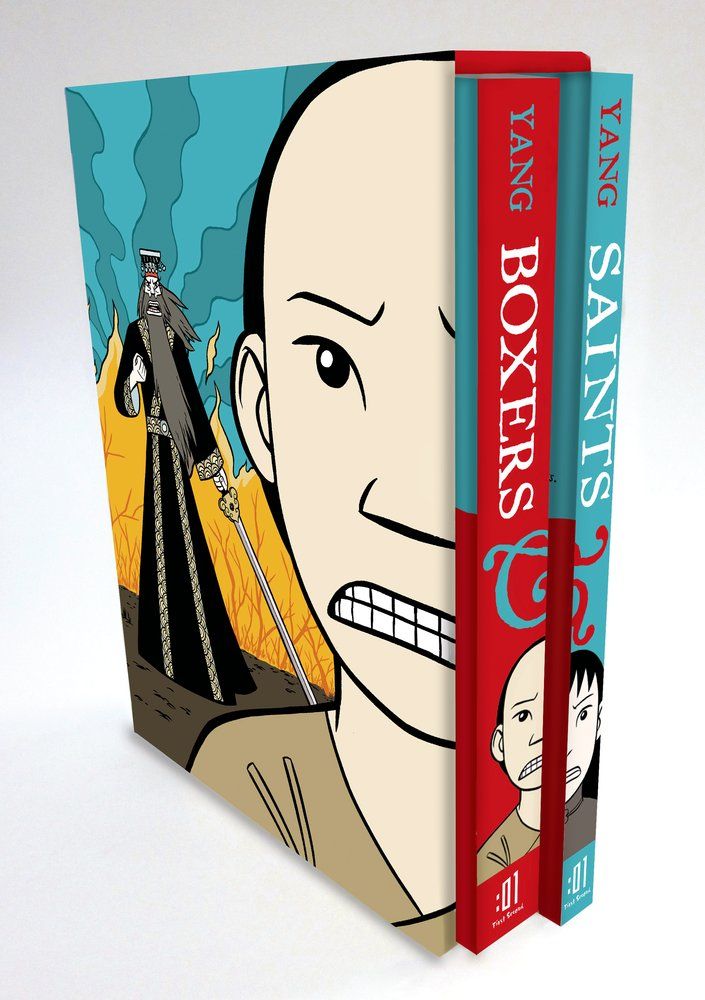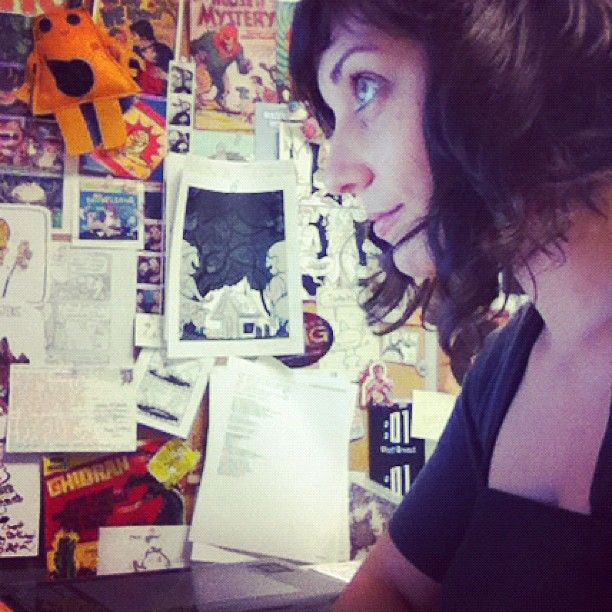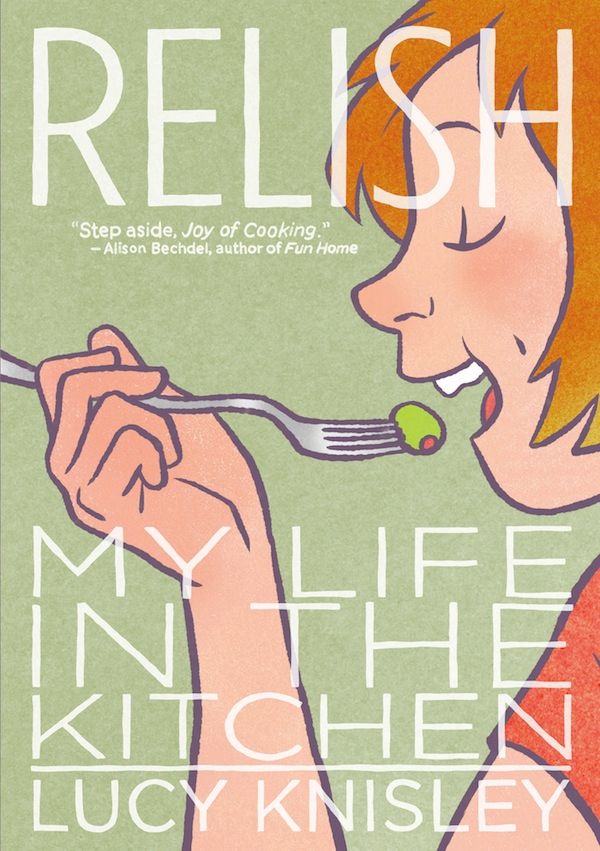Since its launch in 2006, First Second has built a solid reputation as a publisher of high-quality graphic novels: Gene Luen Yang's American Born Chinese, Emmanuel Guibert's The Photographer, Mark Siegel's Sailor Twain, and Jorge Aguirre and Rafael Rosado's Giants Beware testify to both the breadth and the quality of the company's line.
I was offered the opportunity to interview editor Calista Brill and designer Colleen AF Venable about the past year at First Second and what we can expect in 2013, but I couldn't resist the temptation to sneak in some questions about the nuts and bolts of working with creators and editing graphic novels.
Robot 6: What has the past year been like and what can we expect for 2013?
Calista Brill: It was really a banner year. There were a lot of titles across the three categories [children, young adult and adult]. We had some really exciting titles for your younger set: Giants Beware, a beautiful book about a girl who is determined to be a giant slayer, so she runs away from home and drags her brother along on her giant-slaying quest. It has won a lot of hearts; we have a lot of fan mail for it. We have a second book signed up [from the authors]. It was one of a couple of standouts in that age category. The other was The Legend of Zita the Spacegirl. Zita the Spacegirl [the first book] was a terrific hit and that has been a big hit as well.
Colleen AF Venable: Friends with Boys came out last year. Faith Erin Hicks is one of our most powerful creators for teens. I feel like that's in a really solid place. I feel like every day she has more fans, and I see more comments on the new book, Nothing Can Possibly Go Wrong.
Calista: I'm just back from Comic Con India, and one of the really delightful aspects of it was when I was at the First Second booth for that event, so many people came by and said they were reading Friends With Boys online, and were happy to be able to buy the book because it wasn't available in India. So Friends With Boys, when it was serialized online, really reached an international audience.
How many books are you serializing online?
Calista: We try to do it with one book per season.
Why do you do it?
Calista: It was an experiment, and it remains an experiment, based on the hypothesis that if you put it out online for free before it is published it doesn't hurt sales, and you are creating an intimacy with the author where the readers of the webcomics feel like they are part of the community, part of the experience of the book and the creation of the book. It raises the profile of the authors.
Colleen: Sailor Twain was a standout.
Yes, you had followers — what did they call themselves?
Collen: Twainers.
Calista: When we were releasing Sailor Twain as a print book, Mark had Twainers show up at almost every event he did for that book. No matter where he was in the country, there were local people who wanted to meet him.
Colleen: Not only that but to meet other people who were commenting. I feel that happens a lot with webcomics, more than it happens with other comics. I am really into webcomics; that is how I got into comics. I actually had a spreadsheet where I followed 42 at one point, and I knew when they all updated. I talked a lot with Mark about webcomics and the audience you can get with webcomics. I feel like there are a lot of people who read webcomics but may not necessarily know what is going on in the graphic novel world, and that is a great way to get that audience together.
Calista: One of the books we have coming out in 2013 is Delilah Dirk and the Turkish Lieutenant, by Tony Cliff. It's so special when we get a book like that.
That started out as a webcomic, but that's sort of the reverse of your usual way of doing things, isn't it?
Calista: Conventionally, we sign up a book with a traditional book-publishing contract and decide we are going to serialize it online while it is being written. With Delilah Dirk, Tony had already published the whole thing online before we came into the picture.
How many books have you serialized this way?
Calista: Maybe 10 at this point.
Are you worried about piracy?
Calista: I will say First Second has not had a lot of trouble with online piracy, but we have a parent company, Macmillan, that has a whole department dedicated to finding sources of piracy and shutting them down.
Colleen: I think comics readers are the best people on Earth, and they would never steal — or if they did they would buy it afterward.
What books from the past year do you wish had gotten more attention?
Colleen: Bloody Chester! It's one of those books where you think you know where it's going and it does a total 180 on you. It's older teen, adult, a Western, a mystery — it doesn't fit super-well into a box. I feel that happens with a lot of things that have their own heart.
Calista: I adore this book. I think everyone should read it. When we debuted it at San Diego Comic-Con, the author was in the booth and he was talking to people and signing the book and people would come up and ask what it was about, and I would say "It's like Deadwood but with teenagers and even bleaker," and he would say, "It's a poetic coming-of-age novel," and both of these things are true.
What are you looking forward to in 2013?
Calista: A book coming out this spring by Lucy Knisley, who has an online following and is also the author of a beautiful travel book, French Milk. It is a food memoir, Relish: My Life in the Kitchen, coming out in April. It's a delight from start to finish, a portrait of Lucy's life so far through the prism of food and cooking, which is significant because her mother is a chef and her father is sort of a foodie. So it's a beautiful memoir with this specific spin. I think it is going to appeal to teens as much the adult market.
Isn't that true of a lot of your books — they have that dual appeal to teens and adults?
Calista: Yes. One of the interesting things about graphic novels is they don't break down as neatly and precisely into age categories as conventional books do, especially when it comes to children's books. We have a lot of books that work really well for teen readers and also find a significant readership with adults, and vice versa.
Can you give me an example?
Calista: Anya's Ghost! The other book we have coming out this year that I think will be a similar case is Battling Boy, which is the long-awaited Paul Pope book. It's a middle-grade adventure but it will be appealing to adults and teens as well.
How do you balance your line — what sort of a mix of titles do you strive for?
Calista: We try to keep it one-third adult, one-third teen and one-third for younger readers. That varies from year to year.
How has First Second evolved over the past six years?
Colleen: In some ways the fundamentals have stayed the same, which is we publish the books we love. I feel we have been given this great ability to see these things that are not necessarily an easy box to check. The first book we ever published is A.L.I.E.E.E.N., which is both really cute and the most disturbing thing I have ever read. Then the next thing was Deogratias, which was about the civil war in Rwanda. The common thread in all our books is we are about story and art coming together. Sometimes you get a mini-comic that's beautiful and you get to the end of it and you say "Wait, what?" We want to avoid the "Wait, what?" We are all big readers, not just of graphic novels but of every kind of book in the world. We are constantly passing novels back and forth. That's the feeling we are aiming for, the feeling when you finish a book and want to go back and read it again.
Calista: Several huge projects, substantial and also very long, that have been in the works since First Second started have gotten finished, so we have a lot of enormous books. It's very satisfying to have a book with an enormous spine.
Colleen: We are very excited about Boxers and Saints, which is our first box set.
Calista: Boxers and Saints in some respects is very much in the same vein as American Born Chinese, a very substantial, beautiful magical realist look at a specific moment in a cultural event. The two volumes tell parallel stories of two people caught up in the Boxer Rebellion in China. It's going to be one of the biggest books in 2013 and certainly one of the most beautiful books we have published.
One thing I have noticed about First Second is you often work with people who have been working independently for a while, but you really edit a book. What do you do, as a graphic novel editor? How do you shape the book?
Calista: It varies from book to book, but regardless of whether people have published their own work without an editor before, I generally find there is a satisfying collaboration to be had in every scenario. I also try to find people to work with who are interested in editors. People know now that First Second is a house where you can expect an editor to be involved in the creation of your book, so people who don't want that don't approach us as a publisher. In terms of how involved I am, it varies from project to project. There are certain books I sign up, like Delilah Dirk and the Turkish Lieutenant, which is finished, and I thought it was absolutely delightful as it was. Tony and I went through it and found two or three scenes that could be clarified and expanded, so the version is slightly different than online, but the story is the same, and the characters are the same.
When I am working with someone and we are developing a book from scratch together, I am generally quite involved. I find that the most satisfying and engaging part of my job. It is a tremendous honor to be on the front lines as a book is taking shape.
My job is a little bit of a kitchen-sink situation. I have many roles. I work with authors from the get-go on the development of the story — I don't tell them what to do, but I am acting as a sounding board and adviser on big story questions: How the story is structured, who are the characters, how they relate to each other. As the story develops and is finalized, I do some line editing on the script and make sure I am happy with the language, that it's appropriate for the audience and all dialogue is in character. Then I work hand in hand with the illustrator — sometimes it's the same person as the writer, sometimes it's different — to make sure the art is coming together in a style appropriate for the book, that it's drawn consistently, that the scenes are done in a visually clear manner. So I'm sort of an art director. That's the creative part of what I am doing. I also have a lot of administrative responsibilities that have to do with keeping the books on budget and on schedule, and I advocate for the books within the company. I talk about the books at various inter-company meetings, and I talk to Gina Gagliano, who handles marketing and PR, in developing marketing and PR approaches for books. When I'm at cocktail parties, I tell people editing graphic novels is kind of like being a project manager: It's not glamorous, but you start with an idea and end up with a beautiful story, and that's an alchemy that is hard to describe.
Colleen, what are the challenges of designing a book that is already conceived as a visual statement?
Colleen: I think in some ways it's all about collaboration between me and the artist. There are some artists where we just talk on the phone, get an idea, and that's going to be final cover. There are some who think they aren't good at covers, and they might say "Do a mockup." Gene [Yang] is like that. That's what it was, it was a doodle, inspired by the American Born Chinese cover.
With some artists, it's funny, I go back and forth a lot in the thumbnail stages. I think twice last year an artist said "I'm glad you finally got there. That must be the most you have ever done." Tony said that about Delilah Dirk — we had done maybe 30 — and I said, "Not even close." It's about trust, they have to trust me and I have to trust them. It's about listening. I have a rule where I never want to have a book come out where the artist hates the cover. I want the book to be great enough that people want to pick it up but also something they believe in. The covers take a very long time.
How do you find creators to work with?
Colleen: Everywhere. We are at all the small press shows, a lot of the time because we love being there. We have gotten a cartoonist from minicomics, found them online — Astronaut Academy was another one that was a webcomic before it became a book for us. We do portfolio reviews at colleges, and we say in the back of our head "This person is great, in five years they will be amazing," so we stay in touch with them, follow their blogs — I look at a lot of Tumblrs, then there are people who are shy but not shy online, and I find them because they posted one image that spread.
I like it a lot when we get a script and can pair it with an artist.
Calista: I know there are other publishers that will only consider scripts that have artists attached. It can be a little dicey if you get script you really like with artist you don't like.
Colleen: And it's so nice to be able to pair people. Sometimes we can pair someone unknown with someone better known. It's more about really finding the perfect artist for that particular story.

